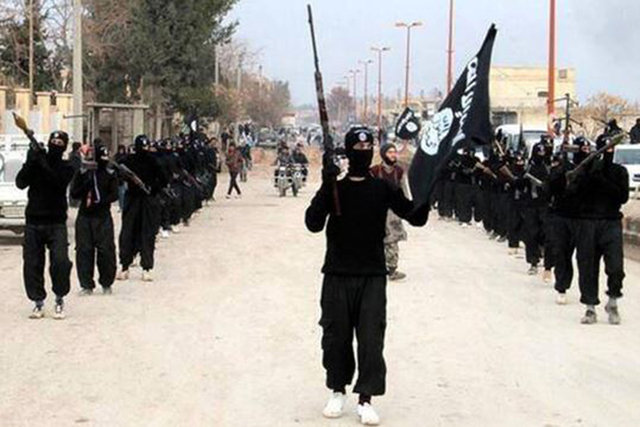Here’s what you need to know about ISIS
The group known as Islamic State in Iraq and al-Sham, a terrorist organization known for beheadings of Americans and Britons, as well as being responsible for the deaths of thousands of Iraqis, has a 10-year history under that known name.
Who are they?
ISIS is sometimes referred to as ISIL in the media and by world leaders. This is because al-Sham is translated from Arabic as the Levant. In 2003, the group was known briefly as Jama’at al-Tawhid wal-Jihad — or, “The Armies of Monotheism and Jihad in Palestine.” Major players became a part of ISIL, and some remained in wal-Jihad.
ISIS is an off-shoot of al-Qaeda; they established themselves as a separate entity from al-Qaeda both philosophically and organizationally. According to RT, a global news channel from Russia, the groups are closer to rivals than allies.
In 2011, the United States began a military withdrawal, and the jihadist militant group began to flourish.
The start of the Syrian Civil War in spring 2011 was a massive boost for ISIS in terms of notoriety and support. ISIS began conflicting with other rebel groups in Syria. It also took control of much of Syria and Iraq in that time under the chaotic uprising against President Bashar al-Assad, according to The Week, a British news weekly. By July of this year, they controlled about one-third of Syria. ISIS is currently in control of a 310 mile stretch of land between northern Syria and the outskirts of Baghdad.
The group is made up of an estimated 20,000-50,000 people across the world. Hundreds came from Europe and the United States. Through criminal means, the group is expected to have $2 billion in assets.
Currently, the militants’ goal is to create a regional Sunni caliphate, a hundred-year old form of Islamic government that fell with the Ottoman Empire. ISIS implements Islamic law, requiring women to wear full veils, or niqab, in public. As punishment, thieves have hands cut off and adulterers are flogged in public. Smoking, drinking and listening to music is banned. Prayer is required five times per day.
What’s happening now?
Throughout August, ISIS carried out beheadings of Kurdish and Lebanese soldiers.
On Aug. 19, 2014, a propaganda video was released online showing United States journalist James Foley being beheaded. Foley was in Syria doing freelance war corresponding on the Syrian Civil War when abducted on Nov. 22, 2012.
The video claimed it was an act of revenge against U.S. airstrikes. The video also threatened another journalist, Steven Sotloff. Sotloff worked for publications including Time and has appeared on CNN and FOX News. On Sept. 2, ISIS released a second video showing the beheading of Sotloff.
Around Aug. 28, the group executed 250 Syrian soldiers.
“So just as your missiles continue to strike our people, our knife will continue to strike the necks of your people,” the man in the video says.
On September 8, the Islamic State went through with a double suicide attack in a town outside of Baghdad, killing 9 and wounding 70.
On September 13, another video released showed a British aid worker, David C. Haines, being beheaded. He had been held hostage by the group for an unknown time. Haines was in Syria as a humanitarian worker and was a former Royal Air Force aircraft engineer. The video claims the beheading was a result of an American-British ally.
British hostage Alan Henning was threatened in the end of the most recent video. The terrorist organization said Henning would be executed if Prime Minister David Cameron doesn’t stop assisting the U.S.
What happens next?
On Sept. 3, President Barack Obama said that the United States will build a coalition to “degrade and destroy” the jihadist group. On Sept. 10, Obama spoke once more, committing to a military plan to bring down ISIS.
As of Monday, the United States’ actions against ISIS include only airstrikes in Iraq, not in Syria. The President plans to send more troops. Officials in the White House said at the time that it could take years to dismantle the Islamic State, with a possibility of extending the mission beyond Obama’s presidency.
According to Associated Press, U.S. Secretary of State John Kerry says he won’t rule out the possibility of working with Iran, but the nations won’t coordinate on military action. He also ruled out coordinating with the Syrian government, although he described ways to communicate to avoid mistakes should the U.S. and its allies begin bombing the Sunni extremist group’s safe haven there.
The Associated Press contributed to this report.
Contact Kristen DeSilva at kdesilva@reviewjournal.com or 702-477-3895. Find her on Twitter: @kristendesilva

















